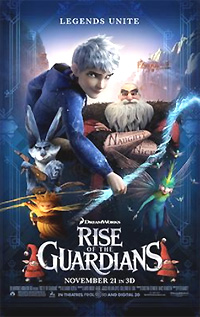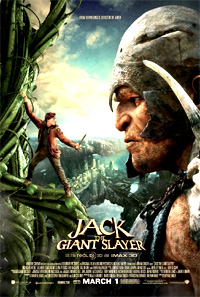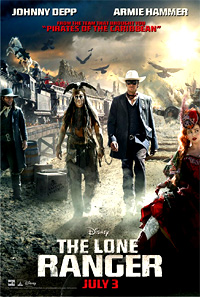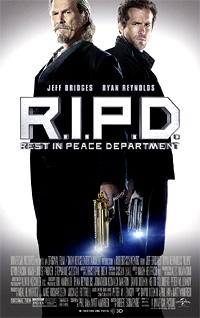
|
Bombs, Disasters and Film Flops: The Most Notable Examples 2012-2014 |
|
(chronologically, by film title) Intro | Summary Chart | Silents-1949 | 1950 -1966 | 1967-1969 | 1970-1974 | 1975-1977 | 1978-1979 1980 | 1981 | 1982 | 1983-1984 | 1985-1986 | 1987-1989 1990-1991 | 1992-1994 | 1995 - 1 | 1995 - 2 | 1996-1997 | 1998 | 1999 | 2000 | 2001 - 1 | 2001 - 2 2002 - 1 | 2002 - 2 | 2002 - 3 | 2003 | 2004 | 2005 | 2006 | 2007-2011 | 2012-2014 | 2015-2017 | 2018-2019 | 2020-2021 |
|
| Film Title, Director, Studio, Budget Information, Description | |

|
Battleship (2012) Director: Peter Berg Studio/Distributor: Universal Pictures Budget: $209-220 million Domestic Gross: $65.4 million Worldwide Gross: $303 million Total Net Loss: $150 million Total Estimated Loss (Inflation-Adjusted): $177 million |

|
John Carter (2012) Disney's big-budget live-action film has the dubious honor of acquiring the largest box-office loss of any film at the time. In addition to its exorbitant $263.7 million budget, it also spent over $100 million for marketing costs. There were issues with the inadequate and lackluster marketing (lack of merchandising and other ancillary tie-ins) and management changes at the studio. Another problem was that the film had no big-name stars. It ultimately proved unwise to select Andrew Stanton as the director because it was his first live-action film (his previous experience was with Pixar animations), and Stanton ultimately engaged in lots of expensive reshoots. It was also commonly acknowledged that the film's teaser trailers, posters, and ads (TV and print) were way off-the-mark (generically flat and uninspiring), provided an unclear message about the film (a non-sequel), and generated only moderate interest. The plot of the sci-fi fantasy-action film was based upon Edgar Rice Burroughs' 1917 story A Princess of Mars - his first novel, originally serialized in 1912 in a pulp magazine (100 years earlier) with Burroughs' pseudonym (Norman Bean). Interestingly, the film was originally titled John Carter of Mars, but the title was shortened - some believed presumably, to avoid associating the film with Disney's other recent flop Mars Needs Moms (2011). When first released in early March of 2012, the infamous film faced major domestic competition from a film in its second week of play, Dr. Seuss' The Lorax (2012). Although the film performed much better overseas (especially in Russia), it was never destined to recoup its massive mega-marketing and production costs. The swashbuckling, often confusing story (with live-action and CGI) was about the interplanetary adventures of fortune-hunter John Carter (Friday Night Lights TV star Taylor Kitsch), a veteran ex-Confederate Civil War captain. He was inexplicably transported from a Southwest cave (via astral projection) to the mysterious, exotic and dying planet of Barsoom (a fictionalized version of Mars). It followed his attempts to mediate civil unrest amongst the various warring Martian races and kingdoms and alien creatures. The main Martian characters included four-armed Green Martian warrior Tars Tarkas (Willem Dafoe) - the leader of the nomadic Tharks, and Carter's love interest - the Dejah Thoris (Lynn Collins), the Princess of Helium. Both Carter and the Princess struggled to save her homeland from invaders guided by shape-shifting time travelers known as Therns. |

|
Rise of the Guardians (2012) This fanciful and imaginative computer-animated feature film was nominated for a Golden Globe Award for Best Animated Feature Film, but that didn't help its box-office results. Although its worldwide gross was over double its budget, the film was still not profitable (due to high production and marketing costs), and the studio was forced to take an $83 million write-down. DreamWorks (famous for blockbusters such as Shrek, Kung Fu Panda and How to Train Your Dragon) faced - for the first time after 17 successful films - difficult job-cuts as a result of the film's failure. Ironically, the film actually sold more DVDs and had greater home video sales totals than its theatrical box-office totals. Many compared the film to a child's version of The Avengers. Mythological childhood storybook icons, known as the immortal Guardians of Childhood, included:
At the North Pole, the existing Guardians (led by North), various forces of light, were informed by the Man in the Moon that Jack Frost would be joining their group as a new Guardian, to help defend the threatened innocence of children. They were told to rally together and team up to confront the malevolent Pitch Black aka Pitch (voice of Jude Law) - the boogeyman or Nightmare King and his dark and nightmarish forces, who were stealing childrens' dreams. Their strategy to stop Pitch was to collect children's teeth (that held childhood memories), while Pitch's evil goal was to elminate Sandy (as the Guardian of Dreams), and to have children stop believing in Easter and Bunny, plus weaken all of their beliefs in the Guardians. Pitch was eventually defeated and eliminated by the power of dreams, and he was dragged to the underworld. |

|
47 Ronin (2013) This dull and tedious big-budget samurai film was one of the most poorly-reviewed films and biggest flops of all time. Part of the reason for the heavy expense was a delayed release date in order to add 3D and some reshoots (an extra love scene, additional close-ups, and more lines of dialogue to increase the presence of US star Keanu Reeves). Also, first-time director Carl Rinsch was fired during post production in late 2012, forcing editors and others to help save the troubled work. When 47 Ronin was released at Christmas-time, it was forced to compete against a slew of stronger films, including Scorsese's The Wolf of Wall Street (2013), writer/director Peter Berg's and Universal's own Lone Survivor (2013), and Ben Stiller's The Secret Life of Walter Mitty (2013). The epic 3D fantasy adventure was a Westernized version of a classic and timeless ancient Japanese tale, already filmed twice in Japan - Kenji Mizoguchi's The 47 Ronin (1941, Jp.) (aka Genroku Chushingura), and Hiroshi Inagaki's Chushingura (1962, Jp.) starring Toshiro Mifune. Set in 18th century feudal Japan, the martial-arts action film starred Keanu Reeves as mysterious half-breed outcast Kai, who ultimately joined a group of 47 outcast samurai led by Oishi (Hiroyuki Sanada). The samurai's objective was vengeance against murderous and evil overlord Lord Kira (Tadanobu Asano) - aided by a shapeshifting Witch (Rinko Kikuchi), who had killed benevolent province Lord Asano (Min Tanaka) before banishing his now-masterless Ronin warriors. Their quest to stop Lord Kira also involved preventing his marriage to Lord Asano's beautiful daughter Mika (Kou Shibasaki) - the childhood love interest of Kai. |

|
Jack the Giant Slayer (2013) Bryan Singer's mildly-likeable adventure fantasy might have been more successful if it had been targeted as a true family-friendly film (along the lines of The Princess Bride (1987)). However, it turned out to be more tween-friendly, with lots of fantasy violence, some PG-13 scat humor, and a dark tone. It was typical of Hollywood's big-budget obsession with expensive performance motion-capture CGI visual effects and grandiose 3D, employed to enhance a simple fable or story. The basis for the distorted screenplay (by a team of three scripters) was derived from two early 18th century British fairy tales: Jack the Giant Killer, and Jack and the Beanstalk. [Note: Fortunately for Singer, he was redeemed the following year by the massive success of X-Men: Days of Future Past (2014).] Multiple reshoots, expensive and time-consuming CGI effects for the giants (produced by the problematic visual effects company Digital Domain that verged on bankruptcy), and rescheduled release dates contributed to its major financial problems. When it was finally released in early March of 2013, it was # 1 at the box office (at $27.2 million), but then found itself competing for the same audience (in the following week) with Disney's Oz: The Great and Powerful (2013), and only obtained $9.8 million, while Oz took in $79.1 million for its opening. It was estimated that Legendary Pictures easily lost over $100 million on the film. The titular brave hero Jack (Nicholas Hoult) was a young farmhand on a quest to rescue the plucky regal heroine Princess Isabelle (Eleanor Tomlinson) who had been abducted by a race of ravenous giants. He had unwittingly unleashed (with a sack of magical beans sprouting into a towering beanstalk) the giants by opening a gateway to their legendary world of Gantua (between Heaven and Earth) and ignited an ancient war. |

|
The Lone Ranger (2013) It was clear to Disney Studios even in 2011 that their western action film had an exorbitant budget - estimated to be approaching over $250 million. The film was prematurely cancelled, but then there were significant efforts to scale back and reduce the costs of production by cutting major salaries, modifying the screenplay, and editing out expensive special effects sequences. When production recommenced, it suffered further problems including set-location damage (due to weather), illness, wildfires, and injuries to crew members (including a fatality in 2012), and there were delays in the release date. Global marketing expenditures increased the overall budgetary costs. When the overly-lengthy film (with surprising violence) was released in mid-summer on its opening 4th of July weekend (at $29.2 million), almost immediately, it was labeled a tremendously disappointing flop (compared to Disney's earlier John Carter (2012) and Mars Needs Moms (2011)) - and reviled by critics. It had to compete and compare itself with the sequel Despicable Me 2 (2013) - with only a $76 million production budget and almost three times the revenue (domestic) on the same opening weekend (at $83.5 million). [Note: Ultimately, Despicable Me 2 had total domestic revenue of $368 million, about 4 times that of The Lone Ranger.] Although The Lone Ranger did better in foreign markets than domestic markets (surprising for an American western!) at $171.2 million, it was impossible for it to recoup its expenses. Disney Studios had now experienced a long string of Jerry Bruckheimer-produced failures with bloated budgets and major declines in box-office revenue: G-Force (2009), Prince of Persia: The Sands of Time (2010), The Sorcerer's Apprentice (2010), and now The Lone Ranger (2013). The western was told with a flashback-framing technique, in which the central top-billed character was aging 'noble savage' Comanche Tonto (Johnny Depp) in San Francisco in 1933, the Lone Ranger's sidekick. He narrated the back-story of his association with The Lone Ranger (aka John Reid) (Armie Hammer). The action was set in the late 1860s in John Reid's childhood town of Colby, Texas, where he was deputized by his Texas Ranger brother Dan Reid (James Badge Dale). The antagonists in the film included escaped cannibalistic outlaw-criminal Butch Cavendish (William Fichtner) and greedy railroad tycoon-executive Latham Cole (Tom Wilkinson). Ultimately, John donned a mask to hide his identity, rode his spirited horse Silver, was armed with a silver bullet, and eventually brought vigilante justice to the town. The film received two Academy Award nominations for Best Visual Effects and Best Makeup and Hairstyling. It also received five Razzie nominations (with one win): Worst Picture, Worst Director, Worst Actor (Johnny Depp), Worst Screenplay, and a Razzie for Worst Prequel, Remake, Rip-off or Sequel. |

|
R.I.P.D. (2013) Universal's supernatural action-comedy starred Jeff Bridges and Ryan Reynolds as two members of the R.I.P.D. (Rest-in-Peace-Department) respectively: wisecracking, Wyatt Earp-like ex-US Marshal Roycephus "Roy" Pulsipher, and murdered detective Sergeant Nick Walker of the Boston Police Department. The two "ghost cops" were undead partners in the after-life, tasked to finding and returning evil souls on Earth (monstrous spirits or zombies known as "deadoes" who were hiding and disguised as ordinary people) who refused to move peacefully to the afterlife. During the odd-buddy couple's adventures after returning as a pair of deceased lawmen to Boston, they often had to appear as avatars - Nick's avatar was an older short Chinese guy (James Hong), while Roy's was a tall, busty blonde bombshell (Sports Illustrated swimsuit and Victoria's Secret lingerie model Marisa Miller). The two discovered an apocalyptic plot to reverse the tunnel flow of souls to the nether-world. The wasted, half-baked effort was an adaptation of Canadian writer Peter Lenkov's Dark Horse comic book Rest in Peace Department. It was a dull recycling of other sci-comedies such as Men in Black (1997) or Ghostbusters (1984), and referenced in part Heaven Can Wait (1978), Beetlejuice (1988), Ghost (1990), and Down to Earth (2001) with Chris Rock. Almost immediately after its poor mid-summer opening weekend showing (at only $12.7 million), and far behind its major horror film competitors on the same weekend, WB's The Conjuring (2013) (at $41.9 million) and Fox's animated Turbo (2013) (also with Ryan Reynolds, at $21.3 million), it was labeled a major box-office bomb. Some of the misfiring film's exorbitant budget was devoted to 3D conversion, but many commented upon the poorly-executed CGI, cheesy production design and special effects. Sensing that they had a stinker on their hands, Universal avoided an advance screening, and only previewed the film for critics hours before the picture's opening. |

|
Legends of Oz: Dorothy's Return
(2014) This computer-animated, 3D fantasy musical was based upon Dorothy of Oz, published in 1989 by original author L. Frank Baum's grand-son Roger S. Baum. The updated, exploitative independent production, with lazy and bland animation and easily-forgettable songs, was heavily criticized by critics and audiences stayed away. In addition, Kelsey Grammar won the Razzie Award for 'Worst Supporting Actor' for his voice-role as the Tin-Man. This was Summertime Entertainment’s first and last project, due to its financial failure. One of the controversies involved in the film's production was that financing was secured through various unethical and grey-area types of fundraising. The two brothers who operated Summertime as President and CEO, Ryan and Roland Carroll, allegedly actually made a profit of $15 million as a fee, but their over 1,000 private and often novice investors did not. In this unoriginal version of the tale, Dorothy Gale (voice of Lea Michele) returned to Kansas where she found her home destroyed and the land devastated from the tornado. An evil government Appraiser (voice of Martin Short), actually a con-artist, delivered an eviction notice to the Gale family. She and Toto were summoned to the land of Oz by the Tin Man's (voice of Kelsey Grammar) Rainbow Mover, but found herself not back in the Emerald City as expected. In her absence, the Emerald City was being co-ruled by her three friends (Scarecrow (voice of Dan Aykroyd), no-longer Cowardly Lion (voice of Jim Belushi), and Tin Man). They were distressed by an evil Jester's (also voice of Martin Short) theft of the magical broomstick of his older sister, the late Wicked Witch of the West, putting him in control of the menacing Flying Monkeys. Soon after, the Jester transformed the broomstick into a wand-scepter and crystal orb-ball to kidnap and turn Oz's leaders, including the Good Witch of the North Glinda (voice of Bernadette Peters) and General Candy Apple from Candy County, into subservient and helpless marionettes. Dorothy joined forces with new characters, including a fat, non-flying owl named Wiser (voice of Oliver Platt), a vain China Princess (voice of Megan Hilty ) from the Dainty China Country, Candy County's military soldier made out of candy named Marshal Mallow (voice of Hugh Dancy), and a tugboat named Tugg (voice of Patrick Stewart) constructed out of wood from an ancient talking tree. The group proceeded toward Oz to confront the Jester and free Dorothy's friends, although they were thwarted along the way. In the final battle between Dorothy and the Flying Monkeys, the Jester summoned a tornado to eliminate Dorothy, but was consumed by it himself. Upon her return home to Kansas, justice was served when the Appraiser was arrested by the Sheriff. |